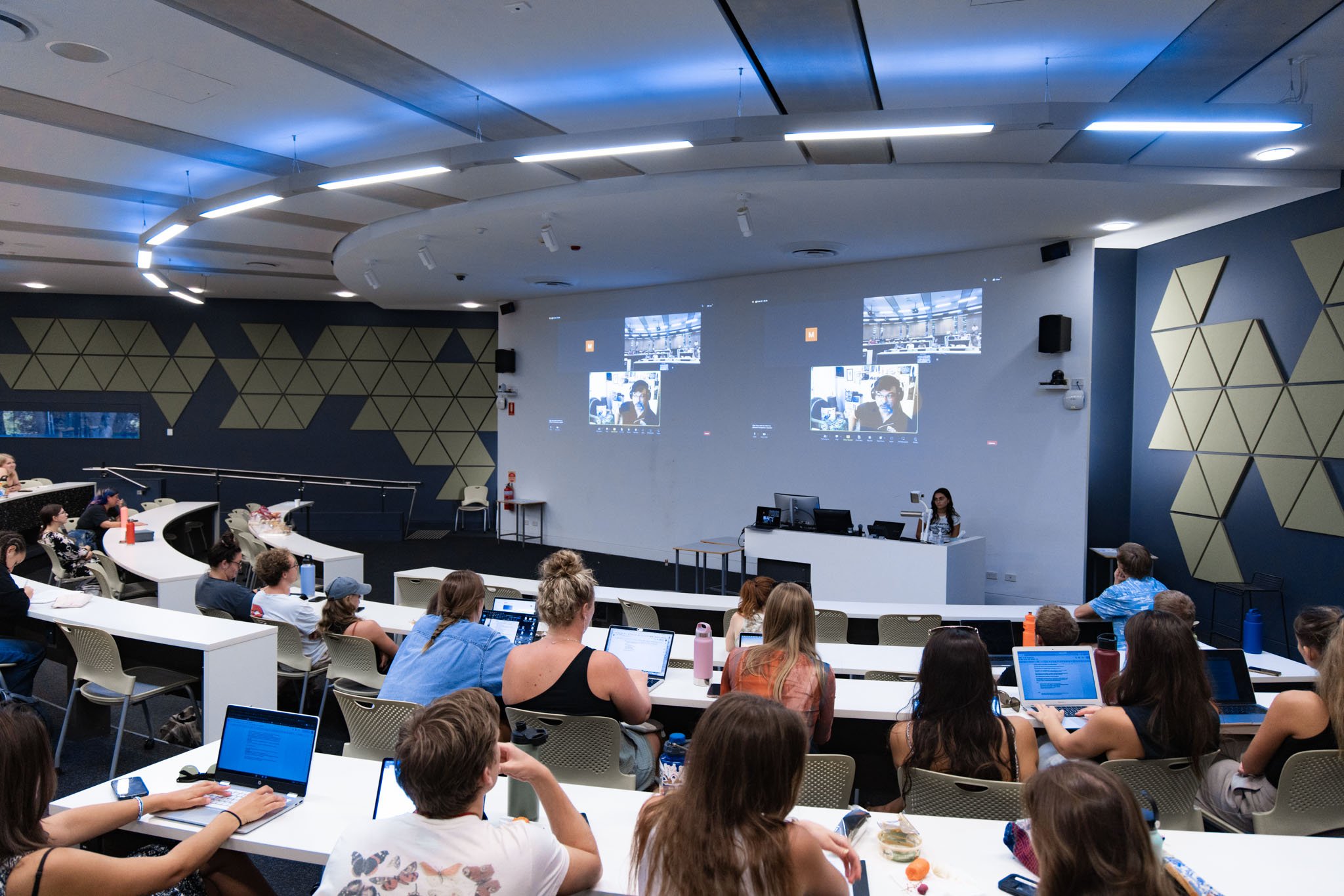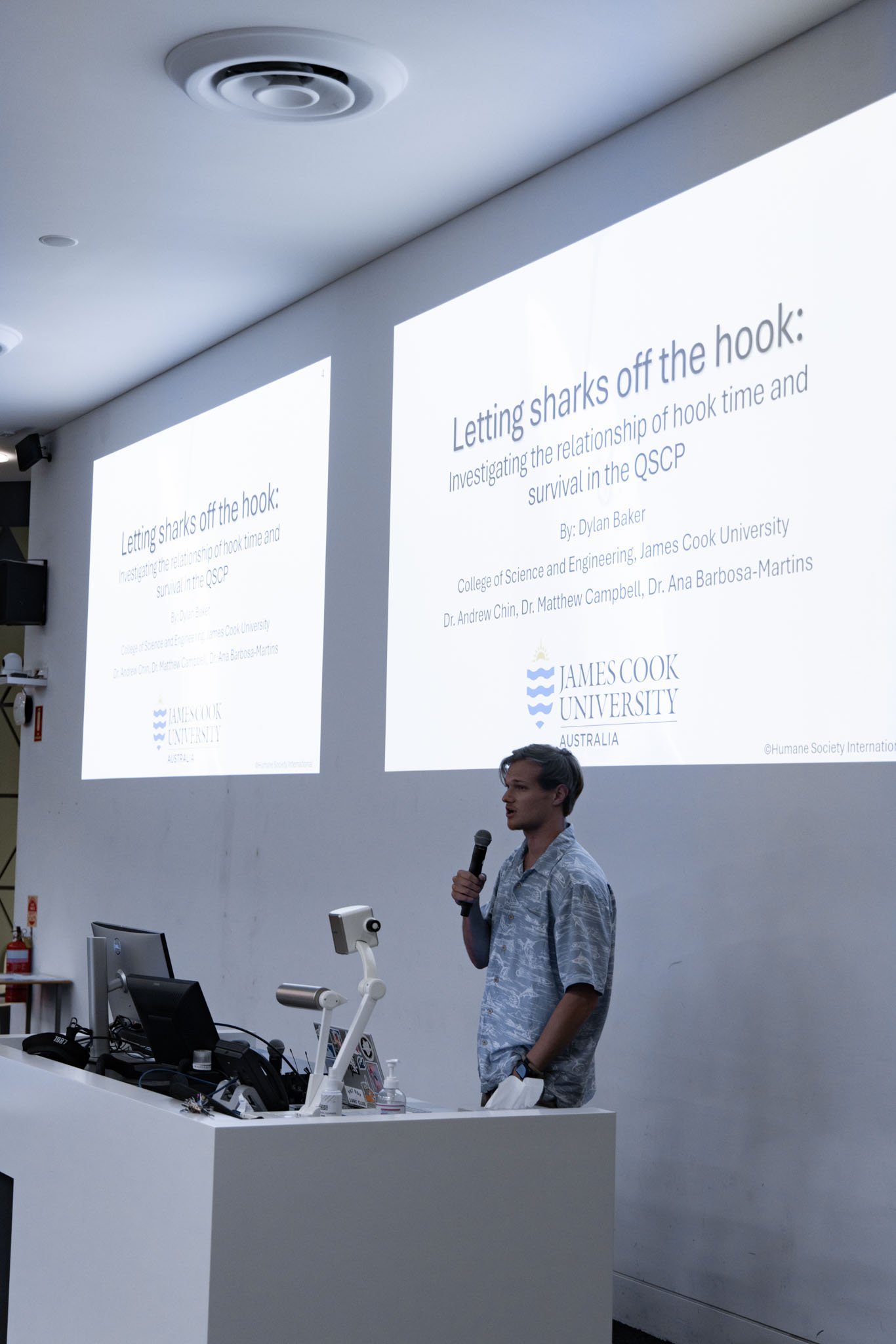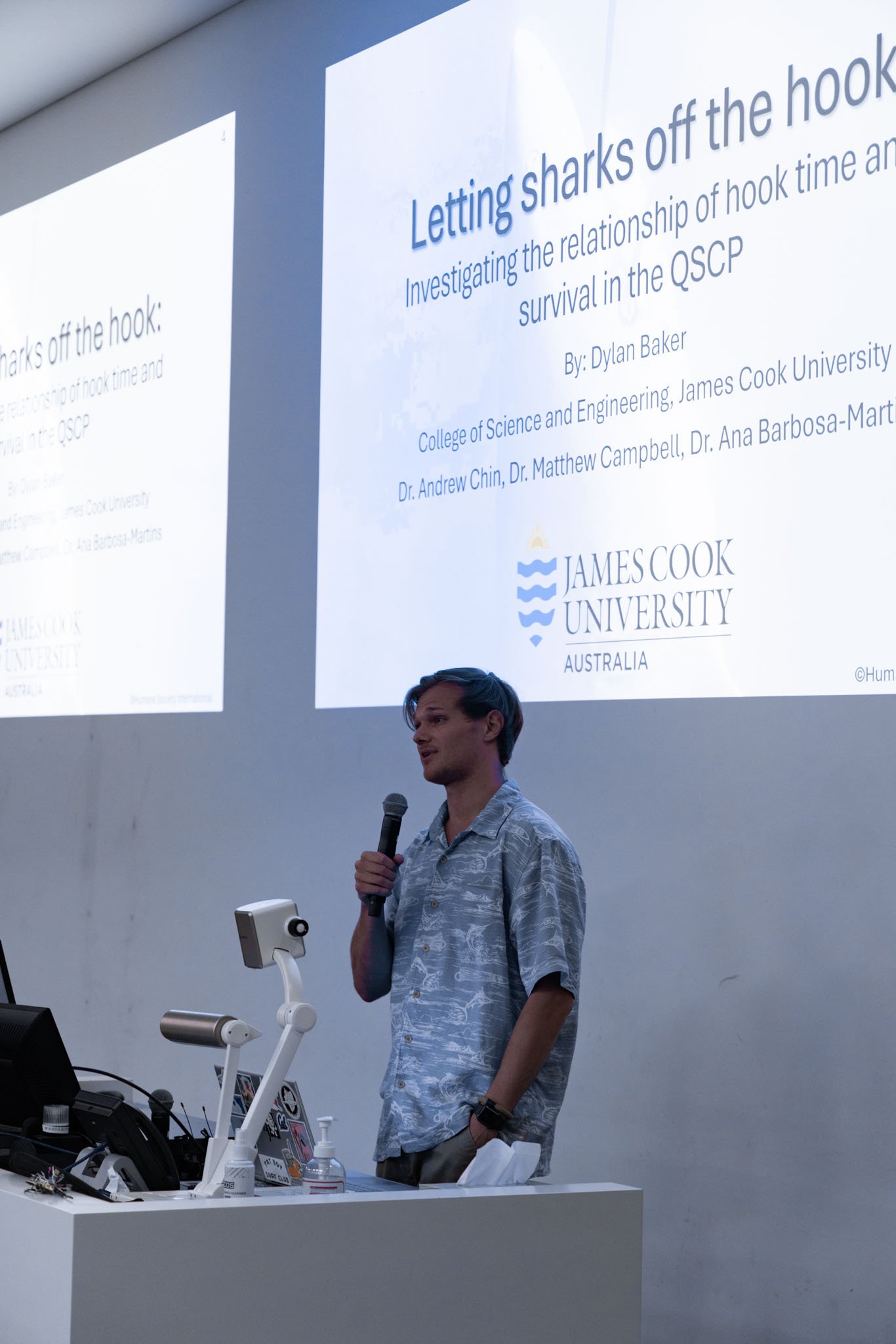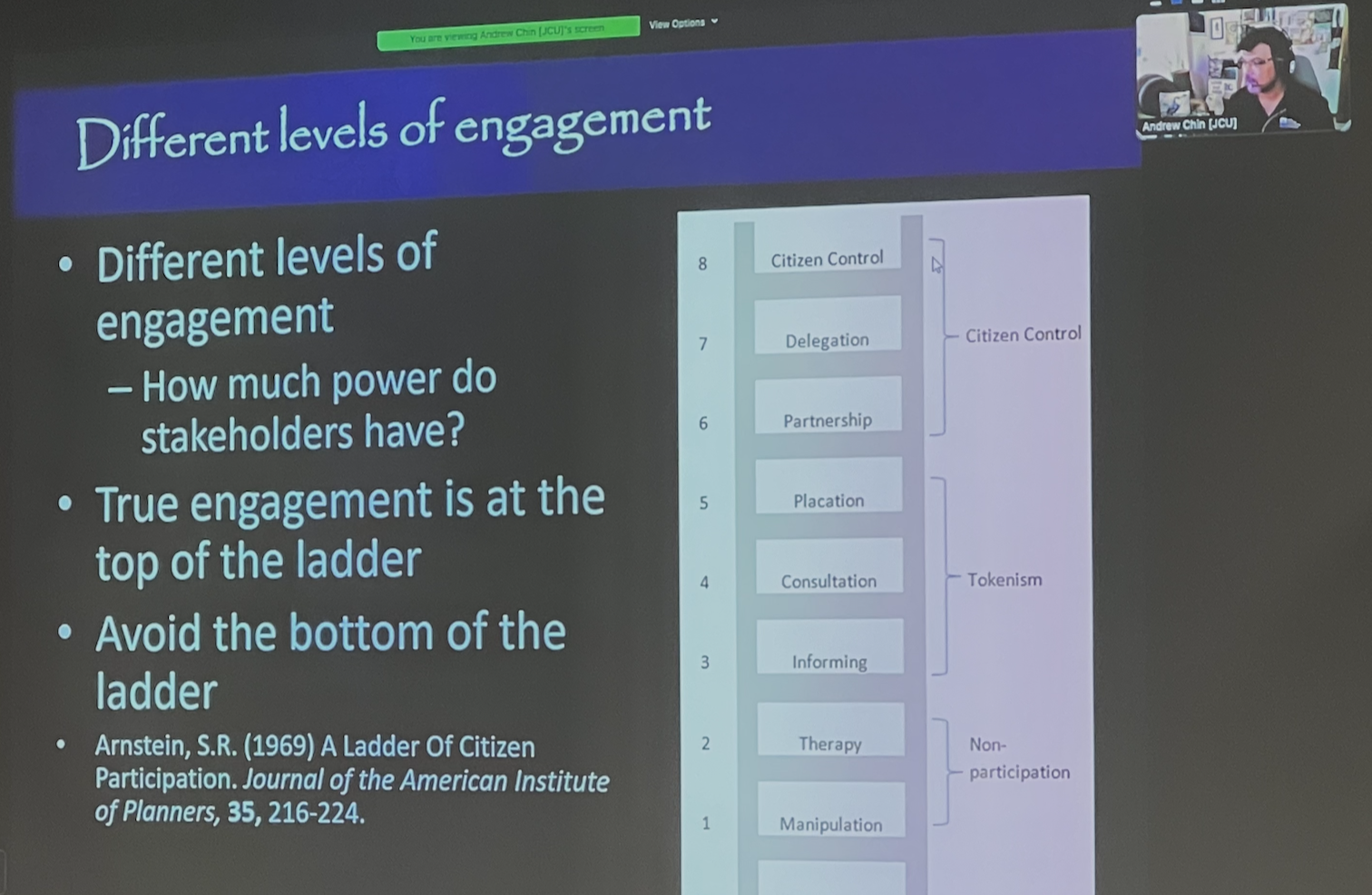Meeting #14 Stakeholder engagement & reducing shark mortality
Thank you so much to Dr. Andrew Chin and Dylan Baker for the insightful talks
Some highlights from the Andrew’s talk included:
No more “parachute research” where you fly into a new community, conduct research like you own the place, and then leave it
Research and capacity building go hand in hand…it is your responsibility as a researcher to help the community understand their power and their role in your research project
Different levels of engagement (see below)
Insights into his consultation in Seychelles marine planning to establish marine parks…steps that need to be taken in order to connect and engage with stakeholders:
Step 1: “Whos who in the zoo”—> Stakeholder analysis
Step 2: Hold meeting with known stakeholders
Step 3: Ask who else needs to be included and invite them (write report run down of the workshop and send out to community)
Step 4: Port visits (visit fishers on their own ground)
Step 5: Present draft plan to stakeholders (write report run down of the workshop and send out to community)
Step 6: Discuss and revise until agreed on (write report run down of the workshop and send out to community)
Record keeping is ESSENTIAL
need paper trail proof that you reached out to all relevant stakeholders to show that everyone was consulted
Keep people involved throughout the entire process
Some highlights from the Dylan’s talk included:
Study assessing mortality of pigeye and bull sharks from Townsville and Yeppoon catch alert drumline data on service intervals from 2015-2024
Introduction to catch alert drum lines and how they are different from classic drumlines
Discussion of why he chose the pigeye shark and bull shark as his study species
Explained the goal of the project, which is to understand the mortality of two robust shark species to inform fisheries management





